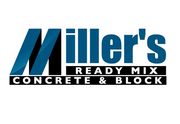COLD WEATHER CONCRETING: CURING AND PROTECTION

So you’re prepared and you’ve got the right mix, now what? For flatwork, the traditional and still the best way, to protect concrete from the cold is to cover it with blankets after it’s been finished. Since the ground is a bit warmer and the concrete generates its own heat, blankets will keep it warm even if the temperature goes below 20 degrees F. A few things we should think about are:
*If the air is below or expected to go below 40 degrees F, use cold weather techniques.
*When finishing concrete in cold weather, you will steel need to wait for all the bleed water to evaporate. Bleed water is basically the concrete particles settling (like mud in a stirred up pond) and squeezing out all the extra water. If you finish that water into the surface, you increase the water-cement ratio and get weak surface concrete. Since the concrete is settling more slowly in the cold, bleeding starts later, last longer, and you can get more bleed water. You can try getting it off with squeegees or vacuums – or you can wait.
*Typically, you only need to keep the blankets on for a couple of days, if the concrete is warmer than 50 degrees F.
*Place triple layers of insulating blankets at corners and edges that could freeze. Wrap any protruding rebar. Make sure the blankets won’t blow off during the night.
*If blankets alone aren’t enough to keep the slab (or formed walls) warm then you can use hydronic heating pipes or electric heating blankets laid on top of the slab and insulated.
*If that’s still not enough, or if it’s too cold to even place the concrete, then you would need to enclose the work and heat the air. Temporary enclosures are expensive, but if the work must go forward, sometimes that’s the only option.
*When using hot, drying air in an enclosure, the concrete surface can dry out quickly, leading to crusting or plastic shrinkage cracking. Also, be careful about fire with propane heaters.
*If the concrete is kept at around 50 degrees F, protection can typically be removed after 2 days. If the concrete remains at 50 degrees F, depending on what kind of cement is used and how much accelerator, you should wait a couple weeks-better to wait 4 weeks-before actually putting into service. You can always test to determine the strength if it is essential.
*Removing the blankets suddenly in cold weather can cause a temperature differential to build up between the outside of the concrete and its middle. This can cause cracking from the thermal differential, but typically only on thicker slabs.
*Cure concrete in cold weather without additional water; adding water will keep the concrete saturated so that the freezing will damage it even after it reaches 500 psi compressive strength.
*Concrete in cold weather absolutely does need to be cured-the surface can dry out even faster than in warm weather, if the concrete is warmer than the air.
About the Business
(33 reviews)
Have a question? Ask the experts!
Send your question

